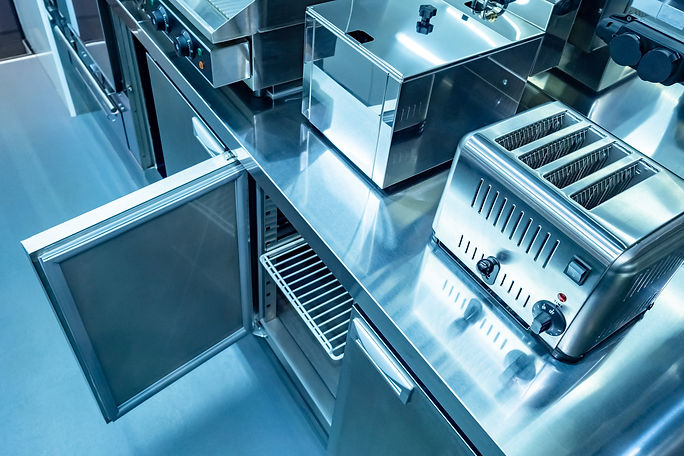
Regulations
HOW TO KEEP YOUR KITCHEN COMPLIANT
DID YOU KNOW?
✔ 70 percent of fires in commercial kitchens originate in faulty extract ventilation systems due to build-up of fat and grease.
✔ Grease build-up also causes an environmental health hazard by providing a breeding ground for bacteria and pests.
✔ You can reduce these risks by carrying out regular cleaning of your kitchen extraction and ventilation systems.
Failure to meet the hygiene standards set out by the Food and Safety Act 1990 and the food Hygiene Regulations 2006 can lead to large fines, a breach of Environmental Health Regulations and could invalidate your fire insurance policy. Whilst your staff can perform daily cleaning tasks to keep the cleanliness to a basic level, a regular cleaning program carried out by professionals is essential.
As well as the aesthetic aspect of a clean kitchen, many insurance companies require kitchen extraction systems to be cleaned on a regular basis to minimise the risk of a fire. The HSE has set out guidelines for frequencies of cleans which are dependent on many factors including but are not limited to, types and quantity of cooking, hygiene, vermin, vulnerability of system to ignition and mechanical hazards.

The Benefits of Extraction Cleaning
Insurance Compliant
Environmentally Compliant
Health & Safety Compliant
Reduced Fire Risk
Increases Efficiency
Extends Lifespan of Equipment
Inadequate cleaning of your extraction unit can lead it to be damaged and stop working correctly. This can be due to general wear and tear, build-up of grime, and clogged parts.
Completing regular deep cleans of your unit as detailed above will reduce all these risks and ensure your extraction unit is working to its full capacity. This also means your system has greater energy efficiency.
Under the Regulatory Reform (Fire Safety) Order 2005, your extraction system needs to be included in your fire risk assessment with action taken to minimise any potential fire risk to buildings and occupants.
Relevant legislation includes but is not restricted to the following:
-
The Regulatory Reform (Fire Safety) Order 2005
-
BS9999: 2008 Code of Practice for Fire Safety in the Design, Management and Use of Buildings
-
Health and Safety at Work Act 1974
-
The Control of Substances Hazardous to Health (COSHH) Regulations
-
The Occupiers’ Liability Act 1984
-
The Workplace (Health, Safety and Welfare) Regulations 1992 (L24) Regulation 6 for Ventilation.
Chat Online
Speak to a Live Agent
Monday-Friday 09:00-16:00
→
